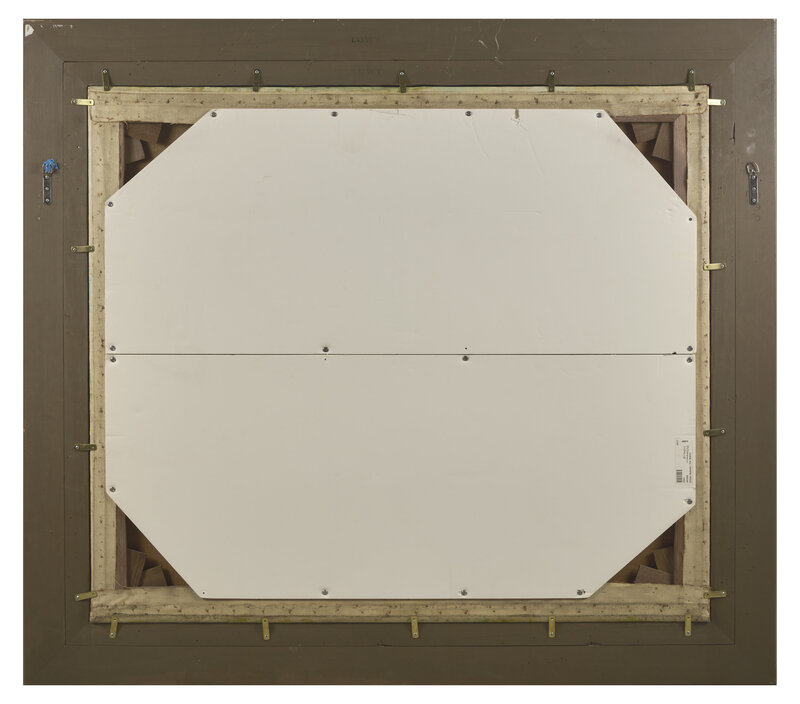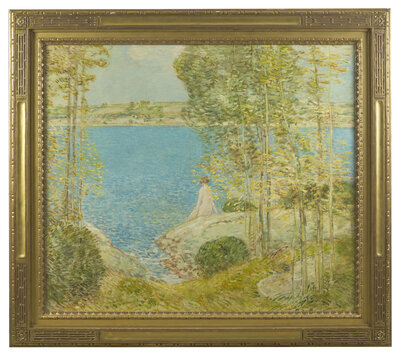Condition Report
Contact Information
Auction Specialist
Lot 36
Childe Hassam
(American, 1859-1935)
The Bather (The Bather I), 1904
Sale 2105 - American Art and Pennsylvania Impressionists
Dec 8, 2024
2:00PM ET
Live / Philadelphia
Own a similar item?
Estimate
$150,000 -
250,000
Lot Description
Childe Hassam
(American, 1859-1935)
The Bather (The Bather I), 1904
oil on canvas
signed Childe Hassam and dated, with the artist's crescent device (lower right)
45 x 52 in.
This painting will be included in the forthcoming catalogue raisonné of the artist's work by Stuart Feld and Kathleen M. Burnside. We wish to thank Alice Duncan for her help researching this artwork and assistance with the following lot essay.
Provenance:
Commissioned by Charles Erskine Wood, Portland, Oregon, 1904.
By descent in the family.
Private Collection, San Francisco, California.
Gerald Peters Gallery, New York, New York, 1998.
Property from a Private Collection.
Literature:
Gerald Peters Gallery, Defining Beauty: American Art from a Private Collection, New York, pp. 24-25, illus.
Lot Essay:
The Bathers is part of a cycle of four paintings that Childe Hassam completed in 1904 for the library of Charles Erskine Scott Wood's home in Portland, Oregon. Hassam had met Wood through their mutual friend, the artist J. Alden Weir. After Wood graduated from West Point (where he would have known Weir's father Robert, who was the art instructor there), he was sent West and in 1877 negotiated the surrender of Chief Joseph of the Nez Pearce. Frustrated with the treatment of the Native Americans, he resigned from the army to study law at Columbia University. Upon his return to Oregon, Wood continued in his pursuit of social justice and aspired to a political career, all while maintaining a successful law practice. He was also a frequently published art critic, one of the founders of the Portland Art Association, was an accomplished painter, and a patron for both his own collection and for public commissions.
Wood was an admirer of and influenced by the Arts and Crafts movement that eschewed the ornate aesthetic of the late Victorian era in favor of simple and harmonious design. Writing to Weir in 1904, he described how Hassam, "whirled in and painted me a whole wall for my studio...It grew out of a remark of mine that I was tired of my bric-a-brac house, like a dealer's shop, and wanted to back to Greek simplicity-the whole room done as an intentional whole by one man." (cited in H. Barbara Weinberg, Kimberly Orcutt, et. al. Childe Hassam: American Impressionist, New Haven, for the Metropolitan Museum of Art, 2004 (Wood to Weir, May 23, 1904, p. 199))
In March 1904 Hassam wrote to Wood that: The decoration is done-and it was with a very fine ration of "Salmon Belles" from Astoria Oregon that the last licks were put in...When will you want the decoration sent out to you. It will be sent rolled...It is on view perfectly by electric light. In fact I have worked on it in places at night. It will look as I want it to by electric light as daylight. I wish you could alight here and see it." (Ibid. Hassam to Wood, March 1, 1904) That summer, Hassam traveled to Portland to install the cycle of paintings himself. All four panels depict east coast inspired landscapes are more allegorical than documentary in their intention. The present painting, along with The Bathers (a four-by-twelve-foot canvas now in the collection of the Memorial Art Gallery, Rochester, New York) reveal the influence of Pierre Puvis de Chavannes on Hassam's allegorical works. Here, as in the large panel, lithe, nude women bask on a sunlit shoreline. As Kimberly Orcutt has described, with their "stylized, primitive quality, the scene suggests a Greek frieze," descried by Hassam as "a class-nude and landscape." (Ibid. p. 319)
Wood was not the only person to commission such work from Hassam. The year before, Hassam completed painted door panels for Florence Griswold's dining room in Old Lyme, Connecticut. The similar subject matter-these panels are also titled The Bathers-shows an increasing interest in this type of subject matter-the allegorical and the classical-within Hassam's oeuvre at this time. As early as 1902, Hassam was working on studies for the works that would comprise the Wood commission, evidenced by the small study now in the Portland Art Museum. In the first decade of the twentieth century Hassam created at least seven works titled Bather, showing his focused interest in compositions of neoclassical female figures at their toilette.
For the Wood commission, in addition to the paintings themselves, Hassam carefully oversaw the framing of the four mural panels, placing an order from the firm operated by Hermann Dudley Murphy, Charles Prendergast, and Walfred Thulin that would come to be known as Carrig-Rohane in 1904 for a frame in "pattern number 2" and another "in the Tarbell pattern." Both were designed by Murphy based on fifteenth-century Venetian cassetta frames.
The Bather is the only one of the cycle of paintings that was signed by the artist and was chosen to remain in the family's possession for that reason.





